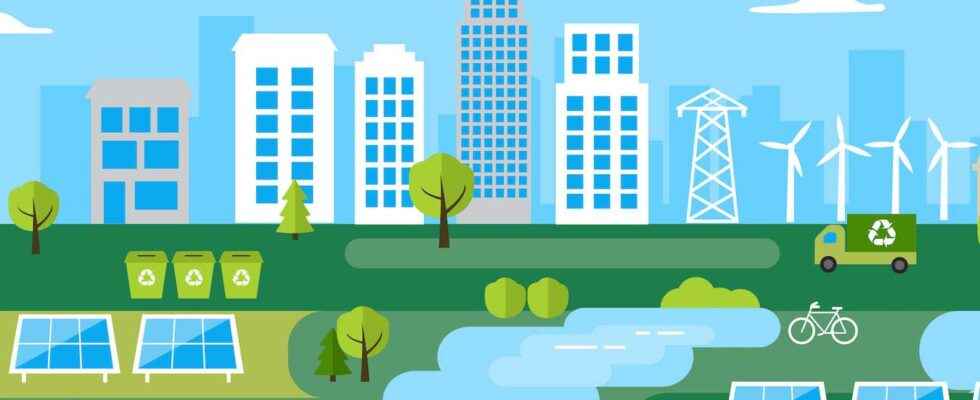France is committed to achieving carbon neutrality by 2050. An objective which remains however abstract for most of us. Yet it will involve some drastic choices and life changes. Between decline and all-technology, Ademe has just published a report showing the ways to achieve it.
On October 18, RTE, the manager of power grid French had presented six energy mix scenarios guaranteeing security of supply, with a view to carbon neutrality. On November 30, the French Environment andenergy (Ademe) in turn published a vast report (680 pages!) named Transition (s) 2050 and detailing four possible scenarios to achieve the carbon neutrality. Mobilizing hundreds of experts over two years, this study establishes a first observation: if the trends annuals continue, the target will not be met by 2050. Second, in any case, “ it is imperative to act quickly, because the socio-technical transformations to be carried out are of such magnitude that they will take time to produce their effects “, Warns the Agency which predicts a” painful “transition, involving a big risk-taking on the technological and human level.
Scenario 1: Frugal generation
It is the most extreme model, based on a radical modification of our lifestyles. Here, nature is sanctuary: the daily food ration is reduced by 22%, that of meat is divided by three. The food is locally produced and 70% organic. Exit also the small house in the countryside: all vacant accommodation and second homes are requisitioned to become main residences; number of constructions new is drastically reduced and their surface area reduced by 30%. This scenario is also that of a France which is withdrawing into itself and its territories: the number of kilometers traveled is down by 26%, with a strong withdrawal from the car. Industrial production is refocusing on Made in France, even if it means increasing prices. This scenario is the least risky at the technological level but the most risky at the social level, the acceptability of such measures being difficult to achieve.
Scenario 2: Territorial cooperation
This scenario is based on the “sharing economy”, with a better concentration between public actors, civil society and the private sector. The habitat is densified in height, massively renovated, and the sharing of buildings is spreading. Medium-sized towns are favored to the detriment of large metropolises and small villages. Meat consumption is halved, with 50% organic. The government establishes an ecological and redistributive tax system, and advocates “qualitative growth” based on production in value rather than in volume. Companies rely primarily on local outlets, with reindustrialisation based solely on our national needs.
Scenario 3: Green technologies
This scenario focuses on technological changes rather than behavioral changes, which are more difficult to implement. Here the decrease in meat consumption is only 30% and the metropolises continue to develop. Housing is massively destroyed and then rebuilt with an increase in their energy efficiency. THE’Agriculture, more and more intensive, however requires more and more inputs, and the forest is exploited to the maximum with little reforestation. The number of kilometers traveled has increased by 13%, but is based on “green” mobility, with vehicles being electrified. The industry is not held back but relies on recycling and thehydrogen. France also goes to the whole digital : the data center consumption is 10 times more important than today.
Scenario 4: The restorative bet
This scenario is the riskiest: he imagines that we will find all the technological solutions allowing us to preserve our current way of life while achieving carbon neutrality. We drive more (+ 28% of kilometers traveled), but with connected and electric cars. The forest is heavily exploited, with a view to Energy recovery, and soils continue to be artificial for the benefit of housing. All natural resources are exploited to the maximum with an important role of imports. To compensate for all these emissions, we use CO capture and geological storage2 and biomass. The problem is that many of these technologies are not yet mature and even carbon sink “Natural” are vulnerable to global warming, underlines the Ademe.
In the end, it is likely that we are moving towards a mix of all these scenarios. Too large a society risks not being socially sustainable, while continuing to consume at all costs while hoping to offset our emissions with hypothetical technologies is hardly realistic. Future governments are therefore doomed to find a subtle balance that does not only make people unhappy.
Interested in what you just read?
.
fs11
